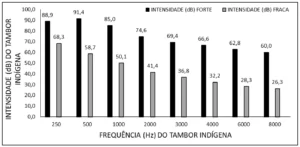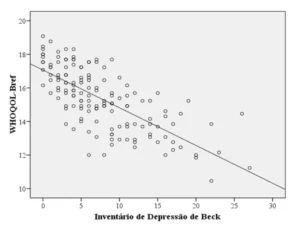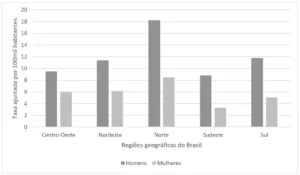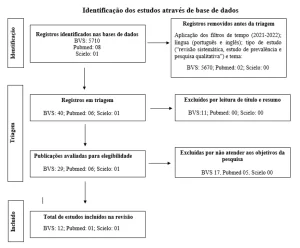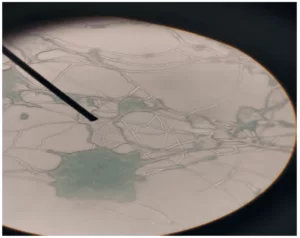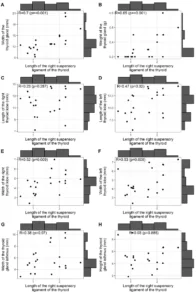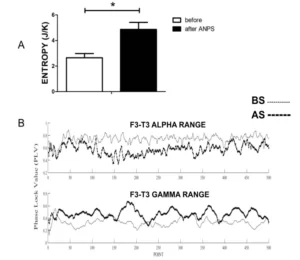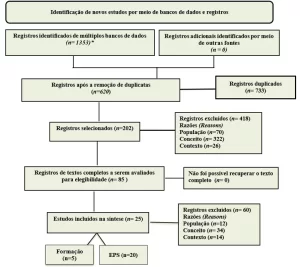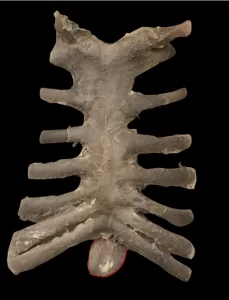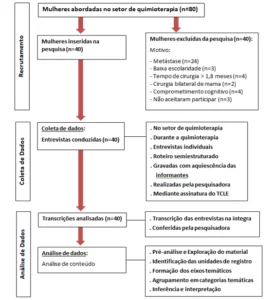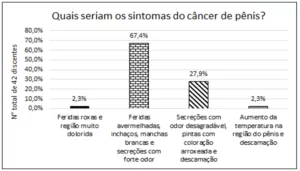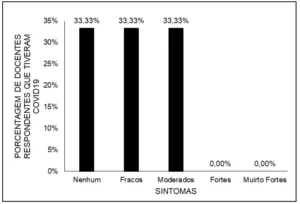ORIGINAL ARTICLE
NUNES, Antônio José Ribeiro [1]
NUNES, Antônio José Ribeiro. Ergonomics and occupational physiology: a multiprofessional approach to work. Revista Científica Multidisciplinar Núcleo do Conhecimento. Year. 07, Ed. 06, Vol. 03, p. 179-190. June 2022. ISSN: 2448-0959, Access link: https://www.nucleodoconhecimento.com.br/health/multiprofessional-approach
ABSTRACT
In ergonomics, approaches, perspectives and purposes in relation to work are presented from a multiprofessional nature, insofar as it covers disciplines that bring contributions to ergonomics in its application in the reality of work, with improvement of operating conditions, relocation, reform and application of ergonomic projects. The research problem presents the following question: What are the multidisciplinary approaches used in the context of ergonomics in companies to reduce physiological and biomechanical damage in the work environment? The objective of this article is to identify in ergonomics and occupational physiology the approaches, perspectives and purposes in relation to the work of a multiprofessional nature. It was intended to demonstrate the concept of ergonomics in work relationships; indicate the interdisciplinary and multiprofessional nature of ergonomics; to point out the biomechanical and physiological aspects in the context of organizational ergonomics. The assumptions of the study indicate that the application of ergonomics and its approaches is necessary in organizations in the creation of projects in technological environments where repetitive activities generate occupational diseases, requiring prevention mechanisms through the creation of ergonomic projects aimed at the nature of work in situations that require corrective action. From the use of methods and steps, ergonomics allows a new perception of the functioning of a company, from the understanding of the work carried out to conceive the work situations in which workers have control over physical, mental and psychic balance and for an improvement of the system. In order to respond to the objectives of the study and the problem pointed out, it was decided to carry out a bibliographic research based on the theoretical foundations of the authors. The results showed that ergonomics deals with the transformation of the work environment for the biomechanical and physiological adaptation to the type of work activity. Therefore, it must be part of the company’s culture, favoring transformations from the insertion of ergonomic projects to the optimization of human work, quality and productivity in a safe and healthy environment. Regarding the biomechanical and physiological aspects of organizational ergonomics, there is a need to evaluate the postural dynamics of the human body and its direct relationship with the workload and efficient adaptation to avoid diseases.
Keywords: Ergonomics, Occupational physiology, Biomechanical aspects, Occupational diseases, Ergonomic projects.
1. INTRODUCTION
Ergonomics is related to the study of work relationships, considering the biomechanics and physiology of work in the environmental conditions between workers and their production equipment in an interdisciplinary and multi professional way.
The role of ergonomics is to develop scientific studies that aim to adapt work to mechanisms that favor safety and physical health, through technological methods, the use of anthropometry, occupational physiotherapy and industrial design (CABRAL, 2021).
Work Physiology is defined as an interdisciplinary discipline associated with adaptive processes in carrying out work activities that require physical effort of a motor nature, characterized by workload (wordload) in each work activity and risk control mechanisms for occupational diseases such as stress, low back pain, Repetitive Strain Injury – RSI and Work-Related Musculoskeletal Disorders (WRMD) (SILVA FILHO, 2019).
The research problem presents the following question: What are the multidisciplinary approaches used in the context of ergonomics in companies/industries to reduce physiological and biomechanical discomfort in the work environment?
The assumptions of the study indicate that the application of ergonomics and its different approaches is necessary in all organizations in the creation of industrial projects and in technological environments in which repetitive activities generate occupational diseases, requiring prevention mechanisms through the creation of ergonomic projects focused on the nature of work in situations that require corrective action on existing roles. From the use of methods and steps, ergonomics allows a new perception of the functioning of a company, from the understanding of the work carried out to conceive the work situations in which workers have control over physical, mental and psychic balance and for an improvement of the system.
The objective of this article is to identify in ergonomics the approaches, perspectives and purposes in relation to work in a multiprofessional nature. It was intended to demonstrate the concept of ergonomics in work relationships; indicate the interdisciplinary and multiprofessional nature of ergonomics; to point out the biomechanical and physiological aspects in the context of organizational ergonomics.
To respond to the objectives of the study and the problem pointed out, it was decided to carry out a bibliographic research based on theoretical foundations of renowned authors who deal with the subject.
The social importance of the study is justified based on the guidelines of NR-17/1978, which establishes ergonomic safety guidelines, created by the Ministry of Labor and Social Security, which also has guidelines on the use of heavy machinery and equipment, working hours and environmental conditions, whose knowledge of this standard may influence a change in attitudes in organizations in the face of knowledge of alternative forms and ergonomic principles to reduce effort and discomfort in work situations.
In terms of ergonomics and physiology of work, in addition to NR-17/1978 which deals with guidelines on furniture for workstations, a large part of the regulatory standards for work safety, determine the need to promote ergonomic adjustments in order to promote well-being and motivational dynamics in the work environment.
The academic relevance is to dimension the ergonomic aspects, in work activities that require the use of machines and equipment that require the worker to have an adequate posture and long hours in front of them, performing repetitive movements have caused conditions for the development of occupational diseases, taking into account consideration that these environmental factors can harm the health of workers in their work. Therefore, the field of ergonomics at work opens up to future professionals who will be able to carry out projects and technical opinions containing ergonomic appreciation.
In this way, companies will be able to implement conditions to design a consistent action plan to adapt healthier work situations, without risks in physical, psychological and postural aspects, based on the appreciation of ergonomic risks.
2. DEVELOPMENT
2.1 CONCEPT OF ERGONOMICS IN WORK RELATIONS
The basic concept of ergonomics in the initial phase of scientific studies was defined as an investigation of the relationship between work activities and man, based on the environment and equipment, for the determination of conformation analysis or anatomical, physiological and psychological discomfort.
Pinheiro and França (2018), analyze that ergonomics is a multidisciplinary science that has favored the quality of life at work in terms of environmental conditions, based on the analysis of the activities developed by man to perform tasks that are prescribed by the organization in a given situation of work.
Silva (2019), assesses that in recent decades, ergonomics has become a better known science due to the need to seek improvements for the promotion of occupational health, encompassing multidisciplinary studies focused on biomechanics at work, from the tasks and problems arising from adaptation to the work environment.
In ergonomics, the structure of production processes is the central focus, starting from the analysis of the biomechanical and physiological properties that work imposes on workers in terms of mobility, articulation of muscular forces, which depend on the limitation of loads and body posture, in order to avoid musculoskeletal occupational diseases (SILVA FILHO, 2019).
Health and safety at work depend on an ergonomic approach in order to avoid injuries caused by efforts determined by a level of performance of the spine in work activities. Occupational diseases of a musculoskeletal nature result from lifting, supporting or transporting loads without an ergonomic design to prevent the wrong handling of heavy loads (CABRAL, 2021).
During this period, the types of ergonomic risks produced by working in inadequate conditions such as night work, operations that involve repetitive movements, efforts and weight, inadequate postures and situations of work rhythm and other physical agents that can cause stress and occupational diseases were classified ( REIS; MORO, 2014).
According to Másculo and Vidal (2011, p. 98)
A ergonomia contemporânea tem como foco na análise a ruptura com o modelo comportamentalista, pois tendem a manter critérios que rompem com o antigo paradigma behaviorista, para uma visão social do trabalhador como componente ativo das sociedades sociotécnicas. Nessa perspectiva, a ergonomia tem como eixo de ação: Os objetivos da tarefa, as características individuais e as condições de execução como fatores determinantes para a análise das condições ergonômicas do trabalho, assim como os fatores consequentes que implicam na saúde do trabalhador, produtividade do trabalho e qualidade do processo.
From this point of view, it starts with studies referring to adaptive processes that involve working conditions in socio-technical systems. Silva Filho (2019) assesses that in the formation of the sociotechnical system there are subsystems that are represented by the technical, social and managerial systems.
The emergence of the socio-technical system is an example of an approach to work that neatly implements an entire process of input, processing and output, whose process involves the transformation of raw materials, the use of energy, communication and information and human and material resources, the which determine stressing factors because they are extreme workplaces, which are directly reflected in the worker’s behavior. (SILVA FILHO, 2019).
In this way, work activities are studied and analyzed under five areas with ergonomic approaches: The first relates to the process of organizing heavy work and planning situations in the work system; the second deals with issues of biomechanics in relation to work and the evaluation of types of tools; the third focuses on ergonomic adaptations for different jobs; the fourth area has as its axis the evaluation and prevention of fatigue in occupational activities, proposing rules and guidelines for work overload and the fifth area works directly with actions to prevent human errors in work activities (STANTON, 2016).
2.2 CLASSIFICATION AND FUNCTION OF ERGONOMICS IN THE WORK ENVIRONMENT UNDER A MULTIPROFESSIONAL APPROACH
Ergonomics can be considered as a set of interdisciplinary knowledge that involves other sciences (physiology, psychology, orthopedics and others). In this way, ergonomics has many functions, for example: correction, whose objective is to improve existing work situations (STANTON, 2016).
In this context, the ergonomics approach is focused on the product and the production process, dealing with knowledge about the biomechanical and physiological efforts performed by workers in work activities.
Gonçalves (2015), assesses that in ergonomics there is classification from the point of view of approach, perspective and purpose. Under the approach, ergonomics has the function of developing ergonomic analyzes on how the postural or biomechanical quality of the worker can be improved in the activities performed to avoid accidents and occupational diseases such as RSI/WRMD, low back pain, tendinitis, etc.
The classification of ergonomics under the approach, perspective and purpose and its subdivisions: In this aspect, it is about the analysis in relation to the production and the systems that determine the tasks. Product ergonomics constituted a type of research that motivated several studies by ergonomists who focused on the production of instruments, tools and furniture with ergonomic design (GONÇALVES, 2015).
According to Stanton (2016), the industrial designer had a great advance based on the biomechanical and physiological foundations of the human body in work activities. As for the Perspective approach, Ergonomics has the function of analyzing how to develop procedures and interventions on the reality of work.
Regarding the focus of Purpose, Ergonomics is subdivided into Ergonomics of Correction, Framing, Relocation and Ergonomics of Modernization.
Figure 1: Ergonomics: approach, perspective and purpose
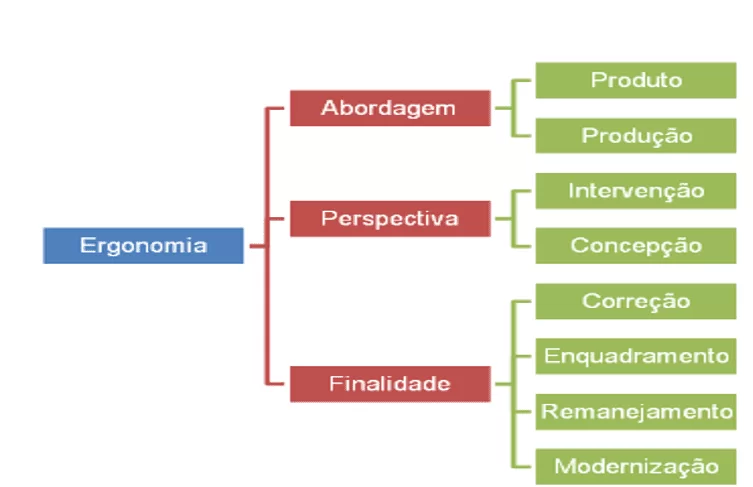
In the perspective, the scientific studies cover the ergonomic dimension in the work technology, having the scientific procedures from the Intervention Ergonomics that has the function of establishing parameters to improve, in a broad perspective, the prevention of work risks and diseases and its manifestations. In this regard, the work environment should imply change projects to eliminate the hardship and risks of work activities, making the environment more productive and satisfactory (STANTON, 2016).
The Conception Ergonomics perspective has as its object of study the reactions to psychological impulses in the face of environmental stimuli at work, such as noise, colors and vibrations.
According to Silva Filho (2019, p. 66):
O ser humano é extremamente sensível ao meio ambiente, captando suas energias através dos sentidos. Neste sentido, é reconhecido o poder de influência das cores, da música e dos ruídos no ambiente de trabalho, assim como as determinadas sensações de quente ou frio, de harmonia e ativação mental; os efeitos da música no trabalho e as consequências dos ruídos para a saúde no ambiente de trabalho.
In view of the recognition of the human being’s sensitivity to the external environment, several studies were carried out in the field of design ergonomics that brought innovations in terms of projects in technological work stations, tools, machines and the production system (SILVA FILHO, 2019).
According to Silva Filho (2019), design ergonomics can also be concerned with the means of production and the components of the work or with the product, being concerned with conceiving the ideal project to be manufactured to guarantee the safety of workers, with a view to ergonomic data corresponding to the user population.
The Ergonomics of Correction, which has as its axis the realization of measures to solve ergonomic problems with a focus on prevention, applies to the knowledge of painful activities for the modification of tiring work situations that can produce health risks (STANTON, 2016).
In this way, the dynamics of corrective ergonomics refers to planning studies within companies to correct the failures that generate stressors in the work environment. Through a designer in the field of ergonomics, the conditions are presented to design an ergonomic action plan to adapt work situations to a healthier environment, without risks in physical, psychological and postural aspects, from the appreciation of ergonomic risks to which workers are subject (REIS; MORO, 2014).
In relation to the purpose of ergonomics, the results are processes aimed at Framing Ergonomics, which has the function of identifying the implementation of norms and rules for the application of prevention, based on standardization for each type of productive activity (GONÇALVES , 2015).
According to Gonçalves (2015), in Rehandling Ergonomics, the function is to produce actions that can contribute to changes in existing standards for the application of corrective measures. And Modernization Ergonomics aims to change the technical basis of the production process, in order to favor the Quality of Life at Work – QVT.
The ergonomics of modernization is associated with a form of relocation resulting from changes in the production process, in the case of the analysis of a modernization project in companies, which implies reform in order to apply mechanisms to adapt the environment to carry out the work activities (GONÇALVES, 2015).
Silva Filho (2019), considers that the subdivisions of ergonomics are currently understood, from a dimension focused on a macroergonomic approach represented by the structuring of approaches aimed at the socio-technical systems represented by companies, people and the technological environment.
Considers Silva Filho (2019), that ergonomics is interested in the application of knowledge about people and organizations for the development and implementation of projects using technology. The new realities of work are characterized by the rapid spread of computers and telecommunication systems, which produce new expectations of work and life.
Based on ergonomic adjustments, keyboards, monitors, tables, chairs, and other equipment are currently being produced based on ergonomic principles so as not to strain the tendons of the hands, spine, vision and others, allowing the worker to develop his functions in the work environment with less physical effort (SILVA FILHO, 2019).
Cabral(2021), assesses that all approaches, perspectives and purposes of ergonomics form a set of measures dedicated to the implementation of improvements aimed at the organizational environment, based on the various uses of technology and worker health.
In this aspect, Contemporary Ergonomics is currently classified into three approaches: Ergonomic intervention, macroergonomics and anthropotechnology, which are applied to the field of ergonomics focused on physical, organizational and cognitive ergonomics Silva Filho (2019). In this context, the three approaches integrate the set of work protection actions in relation to physical, mental and psychological health, in terms of biomechanical improvement through the use of knowledge to improve bodily compliance with equipment, technological and furniture tools with the purpose of reducing the levels of occupational diseases and accident risks.
3. CONCLUSION
From the perspective of the following guiding question: What are the multidisciplinary approaches used in the context of ergonomics in companies/industries to reduce physiological and biomechanical discomfort in the work environment? This article aimed to identify in ergonomics the approaches, perspectives and purposes in relation to the work of a multiprofessional nature and to point out the biomechanical and physiological aspects in the organizational context.
The study also made it possible to identify a relationship with other disciplines that bring great contributions to ergonomics in its application in the reality of work in terms of improving environmental conditions, relocation, renovation and application of ergonomic projects in companies.
Both ergonomics and work physiology have favored a more global view of processes that require a perception of an interdisciplinary and multiprofessional nature in the face of the complexity of risks involving productive activities. So, from the ergonomics and physiology of work, it is possible to evaluate the occupational characteristics that involve jobs that require weight lifting beyond the physical capacity of the individual or work in inappropriate positions.
In this aspect, ergonomics deals with the transformation of the work environment for the biomechanical and physiological adaptation to the type of work activity. And, therefore, it must be part of the company’s culture, favoring the transformations in the companies from the insertion of ergonomic projects for the optimization of human work, quality and productivity in a safe and healthy environment.
Regarding the biomechanical and physiological aspects in the context of organizational ergonomics, there is a need to evaluate the postural dynamics of the human body and its direct relationship with the workload, lifting weights and the efficient adequacy to avoid musculoskeletal diseases.
Occupational diseases are a problem of great worldwide proportion and affect thousands of economically active people because they interfere in people’s lives and require preventive and treatment forms.
The worker’s bad posture during work activities can cause lumbar pain and other ailments affecting the cervical spine. The application of ergonomic measures is reflected in the protection against work accidents, caused by physical fatigue, as well as occupational diseases.
The interdisciplinary and multiprofessional contribution of ergonomics, based on knowledge of the disciplines of work biomechanics, work physiology and other areas, favors the principles and knowledge acquired for the creation of qualitative environments and in the physiological conditions necessary for the prevention of accidents at work.
Ergonomics is associated with techniques that apply knowledge to improve posture at work through the implementation of equipment and furniture that can favor contact between man and machine without harm to health and quality of life.
REFERENCES
CABRAL, Lenz Alberto Alves. Ergonomia integral – Adaptação do trabalho à pessoa (no singular). 1. ed. São Paulo: Jh Mizuno, 2021.
GONÇALVES, Shirley Belém. Validação ergonômica, situada e multiprofissional do brinquedo educativo: Estudo do caso do LOPU. 245f. Dissertação de Mestrado (Engenharia de Produção) – Universidade Federal da Paraíba – UFPB, João Pessoa, 2015.
MÁSCULO, Francisco Soares; VIDAL, Mario Cesar. Ergonomia – Trabalho adequado e eficiente. 1. ed. São Paulo: GEN LTC, 2011.
NR-17. Norma Regulamentadora nº 17 – Governo Federal. 2020. Atualizado. 2022. Disponível em: https://www.gov.br/trabalho-e-previdencia/pt-br/composicao/orgaos-especificos/secretaria-de-trabalho/inspecao/seguranca-e-saude-no-trabalho/ctpp-nrs/norma-regulamentadora-no-17-nr-17#:~:text=Caracterizada%20como%20Norma%20Geral%20pela,%C3%A0s%20caracter%C3%ADsticas%20psicofisiol%C3%B3gicas%20dos%20trabalhadores. Acesso em: 03 mar. 2022.
PINHEIRO, Ana Karla; FRANÇA, Maria Beatriz Araújo. Ergonomia aplicada à anatomia e à fisiologia do trabalhador. 1. ed. São Paulo: Editora AB, 2018.
REIS, Pedro Ferreira; MORO, Antônio Renato Pereira. Risco ergonômico do trabalho repetitivo. 1. ed. São Paulo: Paco Editorial, 2014.
SILVA, Alexandre Pinto da. Ergonomia – Interpretando a Nr-17. 1. ed. São Paulo: LTr, 2019.
COSTA, Vando Rodrigues. Nr 17 – Ergonomia. 1. ed. São Paulo: Viena, 2019.
STANTON, Neville. Manual de fatores humanos e métodos ergonômicos. 1. ed. São Paulo: Phorte, 2016.
[1] Postgraduate in Auditing, Management and Environmental Expertise, Postgraduate in Occupational Safety Engineering, Specialist in Mineral Resources – Mining Engineer. ORCID: 0000-0003-0973-939X.
Sent: May, 2022.
Approved: June, 2022.

